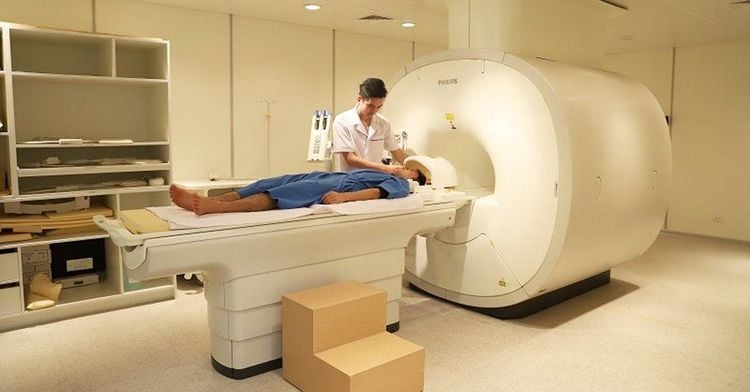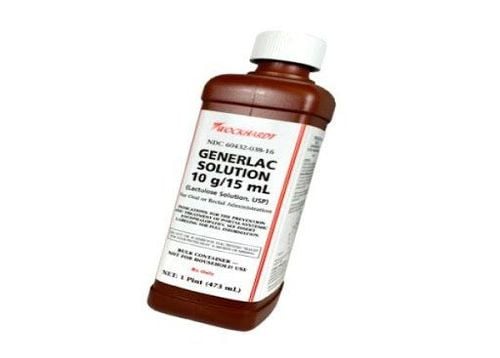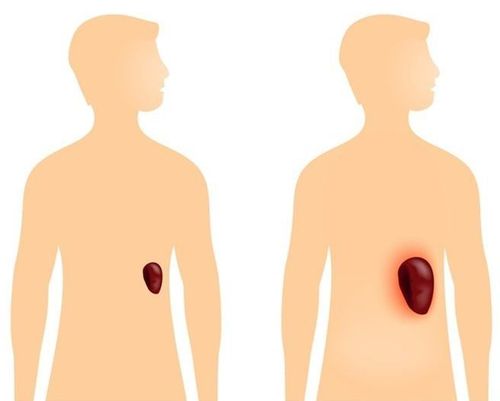This is an automatically translated article.
The article was consulted professionally with MSc Vu Tan Phuc - Department of Medical Examination & Internal Medicine, Vinmec Phu Quoc International General Hospital.1. What is Banti-type splenomegaly?
Cirrhosis is a Banti-type splenomegaly, one of the most common liver cirrhosis. Cirrhosis is a sign of damage to liver cells, when these liver cells form fibrous and scar tissue that damages the lobes of the liver. In addition to Banti-type splenomegaly, there is also cirrhosis due to inherited metabolic disorders.Splenomegaly with total hematopoiesis, bone marrow still rich in cells (splenomegaly) and portal hypertension are the main causes of Banti-type splenomegaly. Unlike Banti-type splenomegaly, the cause of cirrhosis due to inherited metabolism is from metabolic disorders such as: hemochromatosis, Willson's disease (a disorder of copper metabolism), galactosemia congenital bleeding,...
In addition, Banti-type splenomegaly can occur due to portal hypertension; cirrhosis or schistosomiasis causing damage in the liver; extrahepatic lesions due to portal vein thrombosis, pancreatic tumor pressing on the splenic vein; Splenic tissue hardens around the arteries, Malpighian sclerosis.

2. Signs of Banti splenomegaly
Symptoms vary from person to person depending on the condition of the patient. However, most people with Banti-type cirrhosis and splenomegaly will experience anemia, splenomegaly, vomiting blood, bloody stools, cirrhosis of the liver ascites,...If one or more occurs If you have any of the above symptoms, you should see a doctor for early diagnosis and treatment. When treated early, patients will have the opportunity to improve symptoms, improve liver function.
3. Treatment of cirrhosis of the liver and spleen type Banti
Comprehensive clinical diagnosis along with laboratory tests and imaging help doctors detect cirrhosis, especially Banti-type splenomegaly. One of the most accurate and modern imaging methods is magnetic resonance imaging (MRI).Some current treatment methods for Banti-type cirrhosis and splenomegaly are:
Radioisotope techniques will be performed to determine if there is red blood cell retention in the spleen Splenectomy Portal vein anastomosis, to reduce portal hypertension.

4. Diet for people who treat cirrhosis of the liver and spleen
Besides the treatment methods, diet also plays an important role in the treatment of the disease, especially for cirrhosis and splenomegaly. Cirrhosis makes the function of metabolizing food and nutrients to nourish the body and eliminate toxins from the body reduced, causing malnutrition and loss of appetite for patients. Therefore, a healthy and nutritious diet:Eat a lot of vegetables, fruits, fruits, grains to limit toxins entering the body. Limit the intake of protein-rich foods to avoid increasing the concentration of ammonium in the blood, causing a liver coma such as: meat, eggs, fish,... Eating beans helps provide healthy protein for the body Avoid salty foods, avoid foods canned products, monosodium glutamate to limit the amount of sodium absorbed into the body. Avoid eating raw seafood, or snails, shellfish... Stay away from beer, alcohol, stimulants that are harmful to the liver. Fast food, fried food should be minimized Get enough rest, avoid heavy work At the same time, have regular health check-ups to monitor the progress of the disease.

5. How to prevent cirrhosis
Prevention is better than cure, so to avoid having cirrhosis or other health problems, we should actively prevent disease. For Banti-type splenomegaly in particular and cirrhosis in general, the disease should be prevented as early as possible.Hepatitis B vaccination for all ages is considered an effective prevention method for cirrhosis. Follow a healthy diet with lots of green vegetables, fruits, grains,... Choose clean, chemical-free foods to protect the liver. Avoid drinks containing alcohol and caffeine. Do not abuse drugs, use drugs indiscriminately without the permission of the doctor, in order to avoid liver damage. Regular health check-ups for timely detection, especially for those who are infected with hepatitis B and C, need to have regular checkups every 3 or 6 months to monitor the progress of the disease.
Please dial HOTLINE for more information or register for an appointment HERE. Download MyVinmec app to make appointments faster and to manage your bookings easily.














